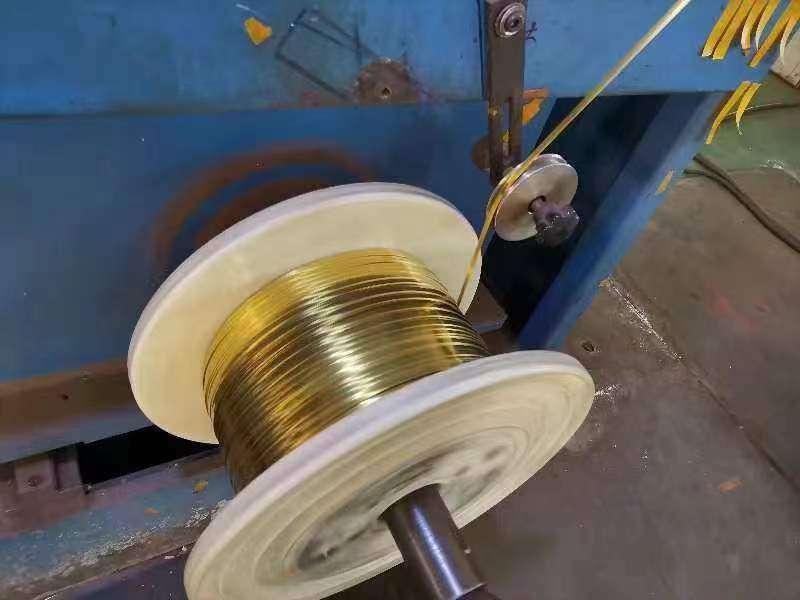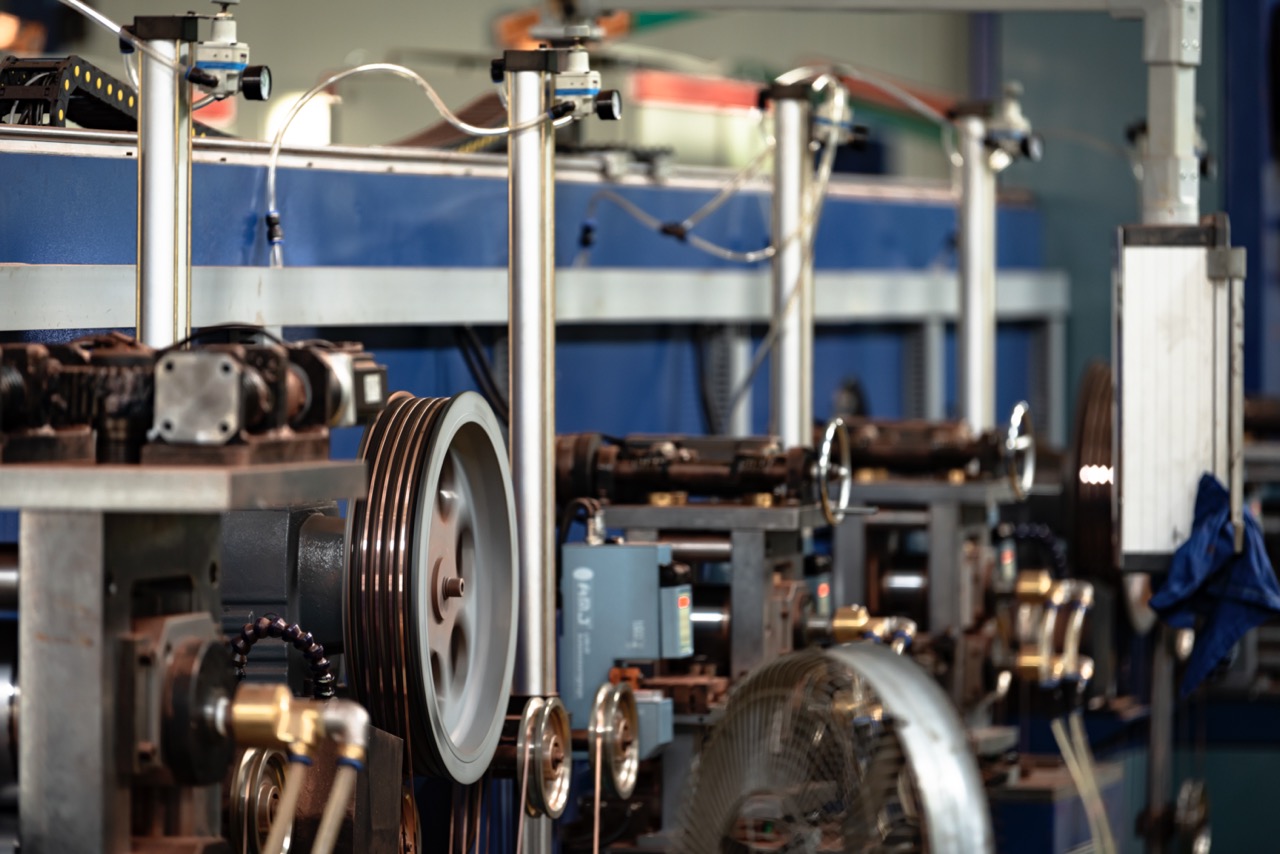There are potential safety hazards in many links during the production of copper strips for terminals, and improper operation may cause production accidents. The following are the dangerous areas and operation links that require special attention during the production of copper strips, as well as the corresponding safety measures:
1. Melting and casting
Hazard source: Smelting and casting are the processes of melting copper raw materials into liquid and casting them into copper ingots or copper rods. They are usually carried out in a high temperature environment, with the temperature reaching over 1000°C. The high temperature of liquid copper and the fluidity of the metal solution will bring serious risks of scalding and burns.
Safety measures:
Operators must wear high-temperature resistant protective clothing, heat-insulating gloves and masks to avoid injuries from liquid metal splashes.
Ensure regular inspection and maintenance of furnaces and casting equipment to avoid equipment failures leading to leaks.
During operation, keep a distance to avoid people getting close to the furnace mouth and casting area.
2. Rolling process
Danger source: The rolling mill is a key equipment for rolling copper ingots or copper bars into copper strips. It usually consists of multiple rollers working at high pressure and high speed, with great mechanical force. Improper operation may cause mechanical accidents such as pinching and roller injury. In addition, the high temperature environment of the rolling equipment will also cause heat radiation damage to the operators.
Safety measures:
Operators should keep a safe distance from the rollers to avoid having their hands or clothing caught in the machine.
Install safety protection devices, such as emergency stop buttons, guardrails, etc., to ensure that equipment operation can be stopped immediately in an emergency.
Before the equipment is put into operation, a comprehensive equipment inspection must be carried out to ensure that the rolling mill is in good condition, especially the braking system and safety protection system are functioning properly.
Wear goggles and high-temperature protective clothing to avoid radiant heat injury.
3. Annealing process
Hazard source: Annealing is the process of heating the copper strip after cold rolling. The temperature in the annealing furnace is high, which may cause burns or fire caused by equipment failure. At the same time, harmful gases (such as oxides and metal vapor) may be generated during annealing, which may harm the respiratory system of operators.
Safety measures:
Operators should wear heat-insulating gloves, protective clothing and masks to prevent burns.
The annealing area should be well ventilated to avoid the accumulation of harmful gases, and exhaust equipment should be installed if necessary.
Regularly check the equipment safety performance of the annealing furnace, especially the temperature control system, to prevent temperature out of control.
4. Surface treatment
Hazards: Surface treatment processes may include chemical plating (such as tin plating, nickel plating, silver plating, etc.), which use acids, alkalis or other chemical reagents, which may cause skin burns or chemical poisoning. In addition, some metal plating processes release harmful gases that affect the health of operators.
Safety measures:
Operators should wear protective gloves, goggles and protective clothing to avoid contact of chemicals with skin or eyes.
The workshop should be equipped with a good exhaust system to prevent the retention of harmful gases.
When operating chemical reagents, operators need to receive chemical usage training and be familiar with the Material Safety Data Sheet (MSDS) to deal with possible accidents.
5. Slitting and cutting process
Hazard source: Copper strips need to be sheared and slit during the production process. Slitting equipment such as shears and slitting machines have sharp blades, which can easily cause cutting injuries. In addition, metal fragments or burrs may be generated during the slitting of copper strips, causing scratches.
Safety measures:
Operators should wear cut-resistant gloves and goggles to avoid being scratched by sharp blades or flying metal fragments.
Use the equipment's safety guard to prevent direct contact between personnel and the blade.
Check the blade wear regularly and replace it in time to avoid blade failure or breakage.

6. Equipment maintenance and repair
Hazard sources: The equipment may generate high temperature, high pressure or other potential hazards during operation. If the equipment is not completely powered off or residual high temperature is present during maintenance, it may cause burns, electric shock or mechanical injuries to the maintenance personnel.
Safety measures:
When performing equipment maintenance, you must first turn off the power, shut down the equipment, and hang a "Under Maintenance" sign in a conspicuous place on the equipment.
When operating large equipment, appropriate tools and equipment must be used, such as heat-insulating gloves, protective clothing, etc.
Carry out comprehensive inspections of the equipment regularly to ensure there are no problems such as electrical leakage, oil leakage, equipment wear, etc.
7. Heavy object handling and warehouse management
Hazard source: Copper strips are usually stored in rolls, and a single roll is heavy. Improper handling or poor storage management may cause the roll to topple or fall, causing injuries. In addition, accidents such as equipment damage or personnel falls may occur during handling.
Safety measures:
Use special lifting equipment, such as cranes and cranes, to transport copper coils to avoid direct human handling of overweight items.
Copper tape rolls should be placed on stable racks and secured as necessary to prevent tipping over.
Operators should receive training on the operation of lifting equipment to ensure that lifting tools are used correctly and safely.
8. Waste Disposal
Hazard source: The production process of copper strips will produce a large amount of scraps and waste copper strips. The edges of these scraps are sharp and can easily cause cuts. If the scraps are not properly stacked, they may also cause environmental pollution or fire hazards.
Safety measures:
Waste materials should be recycled and stored in a classified manner in a timely manner to avoid management chaos caused by excessive accumulation.
Protective gloves and other appropriate protective equipment should be worn when handling waste materials to prevent scratches and other injuries.
Ensure that open flames are kept away from waste dumps and check fire prevention measures regularly.
9. Fire prevention and electrical safety
Hazard sources: Production equipment such as rolling mills, annealing furnaces, and coating equipment all require electricity. If the insulation of the electrical equipment is poor or the lines are aging, electrical fires or electric shock accidents may occur.
Safety measures:
Check electrical equipment and lines regularly to ensure the integrity of the electrical system and prevent circuit short circuits or overloads.
Operators should receive electrical safety training, be familiar with the electrical operating procedures of the equipment, and avoid performing inspections or maintenance while the equipment is running.
The workshop should be equipped with fire extinguishers, fire alarm systems and emergency evacuation routes to ensure timely response in case of fire.
Summarize:
The process of producing copper strips for terminals involves many dangerous operations such as high temperature, chemical treatment, mechanical rolling, etc. In order to ensure the safety of production, it is necessary to strictly abide by the safety production regulations, ensure that operators wear appropriate protective equipment, regularly maintain production equipment, handle waste in a timely manner, and establish complete safety emergency measures. Safety production can not only improve work efficiency, but also effectively avoid accidents and ensure the sustainable and stable development of the enterprise.
